The AMD A8-3850 Review: Llano on the Desktop
by Anand Lal Shimpi on June 30, 2011 3:11 AM ESTEver since the arrival of Conroe back in 2006, we've only really recommended AMD for its (sometimes incredible) value. Recommending AMD for those looking for absolute performance pretty much ended when the Pentium 4 retired.
AMD is looking to change that with the arrival of its first Fusion APUs. These APUs marry one or more AMD x86 cores with dozens if not hundreds of Radeon "cores" on a single die. While today the APU is little more than a cohabitation of these two computing architectures, the end goal is something far more integrated:

Llano is AMD's second Fusion APU, the first being Zacate which we met earlier this year. Llano shouldn't be all that unfamiliar to you either, the notebook version of the APU launched just two weeks ago. Our conclusions were as you'd expect: sub-par x86 performance but competitive battery life and great gaming performance for a value notebook. If gaming is going to be the most intensive thing you do on your notebook, you may find yourself wanting one based on a Llano APU.
Now it's time to look at Llano on the desktop. We previewed the desktop Llano alongside the mobile version but today we're back with much more detail. This article will focus on the basics: CPU performance, GPU performance and the associated details. Ian has a final review of one of the first desktop Llano motherboards - the ASRock A75 Extreme6 as well as a look at overclocking the new desktop APU. Finally Ganesh's article takes an in-depth look at how Llano works as an HTPC platform.
The APU
Although mobile Llano has to worry about fitting into thin and light notebooks, the desktop version has a lot more breathing room and as a result it comes to us in a pretty traditional package. Motherboard backwards compatibility is thrown out the window as you need pins to get video output from the APU to an on-board VGA/DVI/HDMI header and as a result we have a new platform: Socket-FM1.
Socket-FM1 is a 905-pin ordeal that looks reminiscent of the original Clawhammer CPU:
Despite the socket change, heatsink specifications haven't changed. All existing Socket-AM2/AM2+/AM3/AM3+ heatsinks should work just fine as long as they can handle the rated TDP of the chip you're cooling.
The desktop Llano launch starts small. AMD is only introducing four parts today, two of which will be available later:
| AMD Llano Desktop Lineup | |||||||||
| GPU | Total TDP (GPU + CPU) | CPU Cores | CPU Clock (Base/Turbo) | GPU Cores | GPU Clock | Price | |||
| AMD A8-3850 | Radeon HD 6550D | 100W | 4 | 2.9GHz | 400 | 600MHz | $135 | ||
| AMD A8-3800 | Radeon HD 6550D | 65W | 4 | 2.4/2.7GHz | 400 | 600MHz | $?? | ||
| AMD A6-3650 | Radeon HD 6530D | 100W | 4 | 2.6GHz | 320 | 443MHz | $115 | ||
| AMD A6-3600 | Radeon HD 6530D | 65W | 4 | 2.1/2.4GHz | 320 | 443MHz | $?? | ||
The A8-3850 and A6-3650 are going to be the first Llano APUs available, both carry a 100W TDP rating. While this may seem high, do remember that 100W is for the CPU and GPU combined.
Although Llano does support AMD's new Turbo Core technology, neither of the parts launching today have it enabled. The A8-3850 and A6-3650 run at 2.9GHz and 2.6GHz, respectively. The 3800 and 3600 will drop base clock speeds to hit a lower TDP but allow you to turbo up depending on workload. For an explanation of how Turbo Core works, flip back to our mobile Llano article.
Pricing is pretty reasonable. For $98 you can buy an Athlon II X4 640 running at 3.0GHz. For $37 more AMD will sell you an A8-3850 APU, effectively determining the price of the integrated GPU. AMD expects to see desktops built around the A6 to sell for $500 - $600, and A8 based systems to go for between $600 and $700
| CPU Specification Comparison | ||||||||
| CPU | Manufacturing Process | Cores | Transistor Count | Die Size | ||||
| AMD Llano 4C | 32nm | 4 | 1.45B | 228mm2 | ||||
| AMD Thuban 6C | 45nm | 6 | 904M | 346mm2 | ||||
| AMD Deneb 4C | 45nm | 4 | 758M | 258mm2 | ||||
| Intel Gulftown 6C | 32nm | 6 | 1.17B | 240mm2 | ||||
| Intel Nehalem/Bloomfield 4C | 45nm | 4 | 731M | 263mm2 | ||||
| Intel Sandy Bridge 4C | 32nm | 4 | 995M | 216mm2 | ||||
| Intel Lynnfield 4C | 45nm | 4 | 774M | 296mm2 | ||||
| Intel Clarkdale 2C | 32nm | 2 | 384M | 81mm2 | ||||
| Intel Sandy Bridge 2C (GT1) | 32nm | 2 | 504M | 131mm2 | ||||
| Intel Sandy Bridge 2C (GT2) | 32nm | 2 | 624M | 149mm2 | ||||
Architecturally desktop Llano is no different than its mobile counterpart. These are all quad-core parts with updated 32nm cores, boasting a ~6% increase in IPC over their 45nm Athlon II predecessors. Each core has a private 1MB L2 cache for a total of 4MB per quad-core APU.
The GPU side isn't different architecturally either, you're still looking at a Sumo core derived from AMD's Radeon HD 5570. Desktop Llano is available with either 400 GPU cores or 320 cores (you can get the mobile part with only 240 cores enabled as well). While the mobile parts top out at 444MHz, the extra TDP available in a desktop chassis allows AMD to ratchet up the GPU clock to 600MHz for the A8-3850.
AMD calls the two GPU configurations the Radeon HD 6550D and 6530D. Just like you can with mobile Llano, you can also pair a desktop Llano APU with a discrete GPU to have them both run in an asymmetrical CrossFire mode (with limitations of course):
| AMD Radeon Dual Graphics Branding | ||||
| Discrete GPU | 6550D | 6530D | ||
| HD 6670 | HD 6690D2 | HD 6690D2 | ||
| HD 6570 | HD 6630D2 | HD 6610D2 | ||
| HD 6450 | HD 6550D2 | HD 6550D2 | ||
The Chipset
I hate to keep drawing comparisons between desktop and mobile Llano APUs but we also have two chipsets on the desktop side: A75 and A55. The A75 chipset is the high end option with 6 x 6Gbps SATA ports and 4 x USB 3.0 ports:
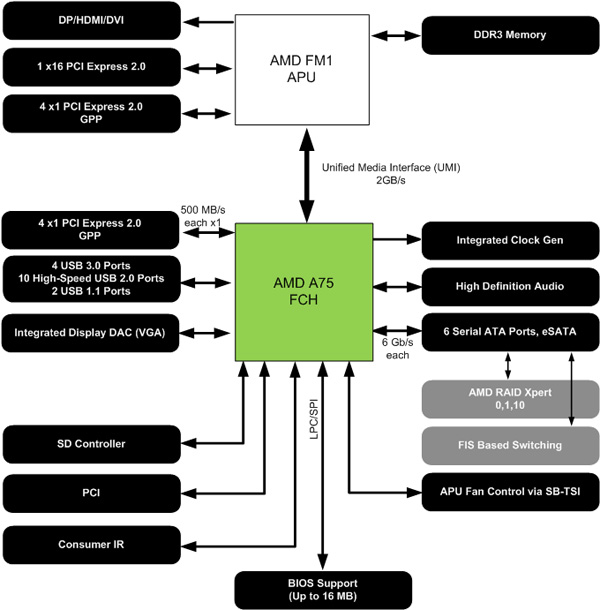
The A55 is the lower power, cost effective option that gets rid of all USB 3.0 support and backs down to 3Gbps SATA:
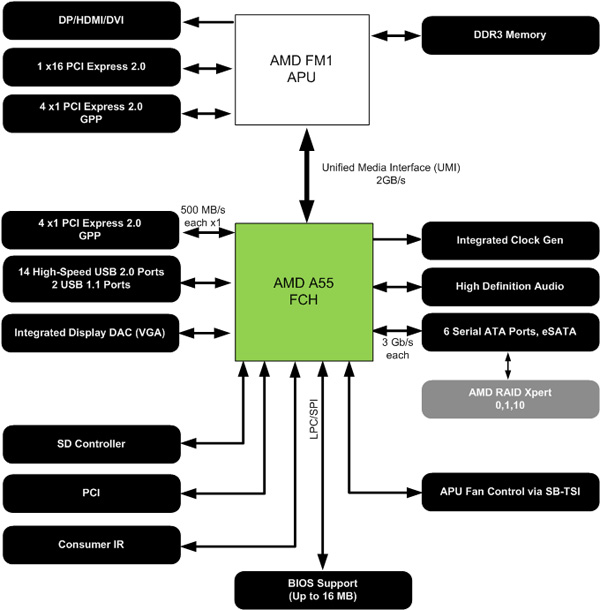


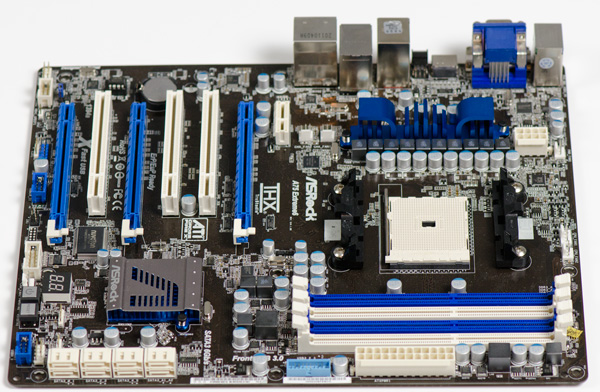
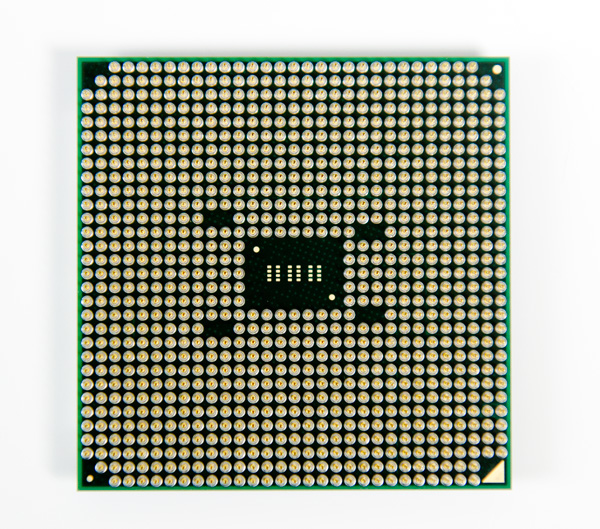
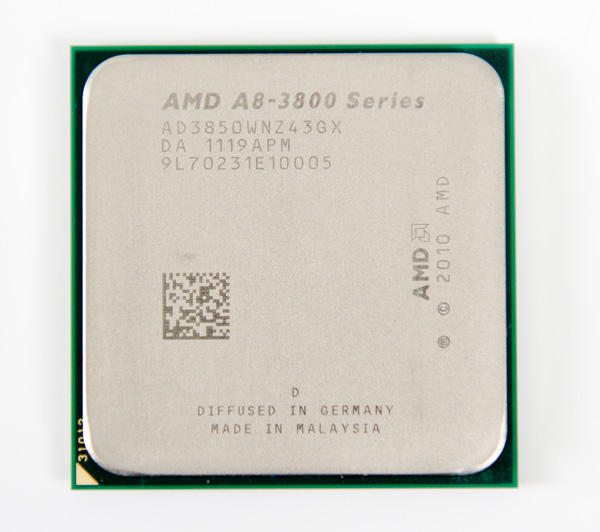
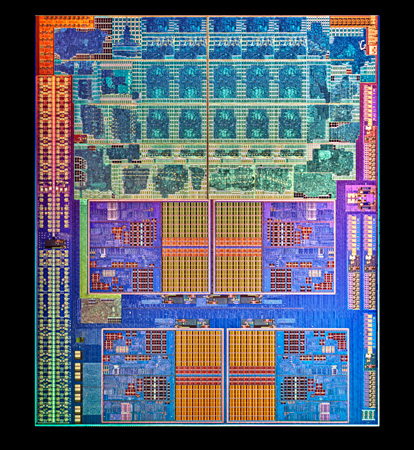








99 Comments
View All Comments
mino - Sunday, July 3, 2011 - link
Tell ya what. The benefit is we get paid trolls like you over here.jaydee - Thursday, June 30, 2011 - link
How many monitors can you connect to this with a discrete gpu? Can you do 3 or more DVI/HDMI montors between the motherboard output and a discrete gpu?j_iggga - Thursday, June 30, 2011 - link
The other dude hit it on the mark. The target for this is OEM parts for budget desktops. So the point about the discrete GPU being more cost effective is mootSo given that...it's great that finally everyone can game adequately.
1920 x 1080 on integrated? unheard of in my time
HangFire - Thursday, June 30, 2011 - link
OK, so maybe it's better than i3 for laptops. But what I was looking for in Llano was a greatly improved per-clock efficiency in the CPU, something that will drag AMD back into true competitiveness with Intel.Instead we get slight tweaking.
If Bulldozer doesn't deliver a better CPU than oft-tweaked cores dating back to Hammer, AMD is dead on the desktop. Low-end laptops will be the only place they can compete, at least until Intel completes implementing DirectX 10 and 11.
L. - Thursday, June 30, 2011 - link
Bulldozer will deliver .. and it will kill Intel at it's price point, I bet your head on that ;)And Intel will be dead on the Server market, you can expect a 30+% perf/watt advantage for Interlagos on release day, only dampened when Intel will release their first 22nm Xeon ---
More blood in the water, better market for us.
BSMonitor - Thursday, June 30, 2011 - link
Bet taken. Bulldozer will be an underclocked, overheating monster. AMD is 2 years minimum behind with Bulldozer.Ivy Bridge will be out before Bulldozer... Bet on that.
L. - Thursday, June 30, 2011 - link
AMD is 2 years in advance with bulldozer, as it is not designed as a desktop processor, but a byproduct of Interlagos, which will very likely take a lot of server market share from Intel.I'd like to see how AMD could be two years behind, when Intel has been stretching a core design from core1 to sandy bridge ;)
Bet on the fact that AMD has always priced their stuff right, Bulldozer is in i7-2600k range, that means it will beat it hands down.
Ivy will be a win in desktop for Intel, but then again, this depends on how fast both Intel and GF can get to 3d-gate 22nm. (which if we look at current trends would mean Intel 6 months before GF more or less).
BSMonitor - Thursday, June 30, 2011 - link
You are completely wrong. Bulldozer was scheduled for release in 2009. It is 2011. Hence 2 years.Considering Conroe processors still dominate Phenom II x2, x4, and x6 processors from AMD. I would say AMD is behind. About 3 generations.
GF is just now shipping its first 32nm chips. Still not a single heavyweight chip at 32nm. Intel has 32nm 6-core processors for over a year. Ivy Bridge is out this fall at 22nm.
Are you just completely drinking the AMD Kool-Aide or what?
silverblue - Thursday, June 30, 2011 - link
If I remember correctly, Bulldozer's design was torn up and started again from scratch in 2008. This would undoubtedly increase development time, especially if they completely changed the design.And for the final time, stop spreading BS about Conroe dominating Phenom II. Even Penryn doesn't. There are plenty of instances where K10.5 beats the Core 2 family and in most cases where Core 2 wins, the difference is marginal at best, not to mention that a) there aren't any hexacore Core 2s out there nor any with any turbo technology, and b) any sufficiently high performing Core 2 parts are massively more expensive than anything AMD is shipping.
I dedicated a HUGE post on this topic to you on Toms using Anandtech Bench data and you've obviously decided to ignore it so... believe what you like. :)
BSMonitor - Thursday, June 30, 2011 - link
Yeah, I exaggerated. But the only way to deal with the diluted is to use such devices. Perhaps they will think and research.Phenom II vs Core 2 is not even close clock for clock.
Phenom II only wins in scenarios where it is grossly clocked higher than the similar Core 2. The 9650 is a 3GHz part, Ph II 980 a 3.7GHz part.
http://www.anandtech.com/bench/Product/49?vs=362
The recently released 980 barely outperforms the 3 y/o Penryn Core 2.